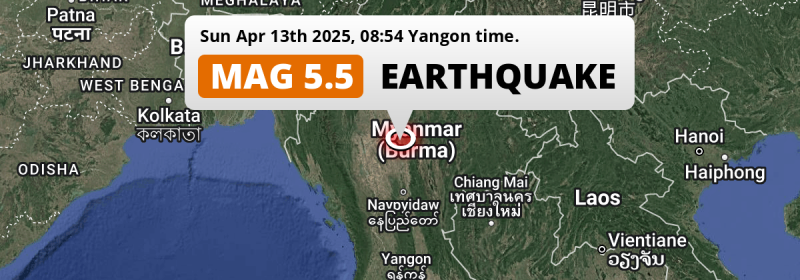Central Asia Shaken: A Series of Earthquakes Hits India, Myanmar, and Tajikistan
A series of powerful earthquakes rattled Central Asia on Sunday morning, prompting residents to flee their homes in search of safety. The quakes, which struck India, Myanmar, and Tajikistan within hours of each other, highlight the region's volatile tectonic landscape.

Recent Earthquake Activity
The seismic events began at 2:24 a.m. GMT when a magnitude 5.5 earthquake hit near Milla in central Myanmar, making it one of the strongest tremors since the devastating 7.7 magnitude quake in March that resulted in over 3,600 fatalities. Thankfully, no new casualties were reported from this latest incident.
Shortly after, at 3:48 a.m. GMT, another earthquake struck the Indian state of Himachal Pradesh, with its epicenter located in Mandi district at a shallow depth of 5 kilometers. This was followed by a stronger 6.1 magnitude earthquake in Tajikistan at 4:24 a.m. GMT, occurring at a depth of 10 kilometers. Just minutes later, at 5:06 a.m. GMT, a further tremor of magnitude 3.9 was recorded in the same region.
Understanding Earthquake Magnitudes
Earthquakes are classified by their magnitudes, which reflect the energy released during seismic activity. Generally, quakes measuring between 3 and 4 on the Richter scale are considered minor and rarely cause damage. However, those ranging from 5 to 6 are regarded as moderate, while earthquakes of 6 or higher are classified as major or strong.
The depth at which an earthquake occurs significantly affects how it is felt on the surface. Deeper earthquakes tend to be felt less intensely, even if they have a higher magnitude. This characteristic underscores the importance of understanding both magnitude and depth when assessing the potential impact of seismic events.
Conclusion
Sunday's earthquakes serve as a stark reminder of Central Asia's seismic risks, with residents and authorities remaining vigilant in the face of such unpredictable natural phenomena. As the region continues to recover from past earthquakes, the need for preparedness and resilience becomes increasingly critical.
Stay informed on seismic activity and safety measures by following our updates.
What's Your Reaction?














